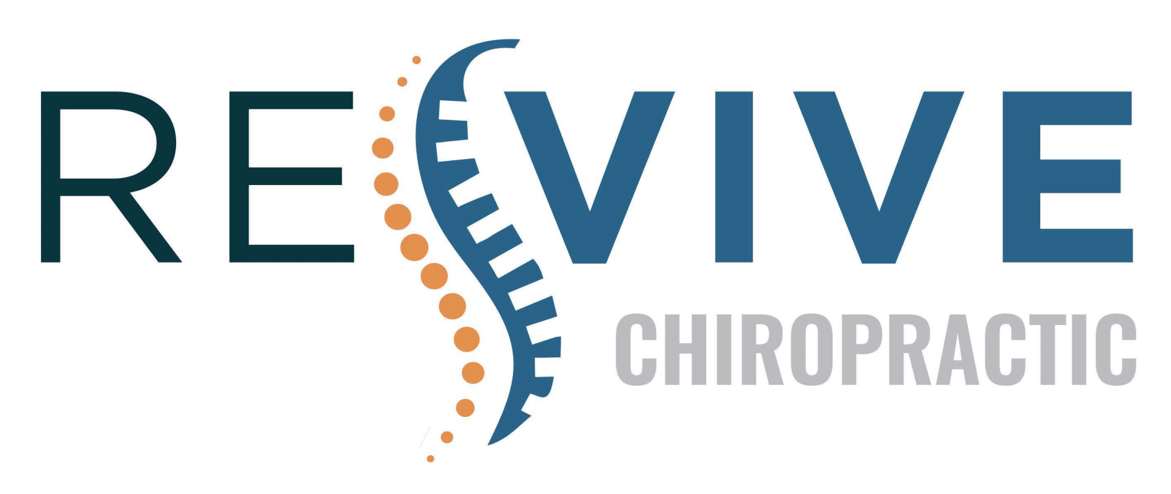If you're struggling with chronic tension headaches, you're not alone, and there are effective ways to alleviate the discomfort. These headaches can often stem from stress, poor posture, or even lifestyle choices, making it essential to identify what works for you. By adopting a few practical strategies, you can markedly reduce their frequency and intensity. Curious about what specific tips can help you regain control and find relief? Let's explore some actionable steps that can make a real difference in your day-to-day life.
Identify Triggers
Identifying your triggers is vital for managing chronic tension headaches effectively. These headaches often have specific causes, and recognizing them can help you take control. Start by paying attention to when and where your headaches occur.
Keep a headache diary for a couple of weeks. Note the time of day, your activities, and any emotional or physical stressors you experience. This practice can reveal patterns that point to potential triggers.
Common triggers include stress, poor posture, and lack of sleep. If you often find yourself hunched over a computer or phone, that might be contributing to your headaches. Similarly, if you notice headaches following periods of high stress, it's important to find ways to manage that stress.
Diet can also play a significant role. Certain foods, like aged cheeses, processed meats, or excessive caffeine, might be culprits. Track what you eat alongside your headache diary to spot any connections.
Hydration is another factor; dehydration can lead to headaches, so make sure you drink enough water throughout the day.
Environmental factors like loud noises, bright lights, or strong smells can also trigger headaches. Observe your surroundings when a headache strikes and consider whether these factors might be at play.
Practice Relaxation Techniques
Practicing relaxation techniques can greatly reduce the frequency and intensity of chronic tension headaches. These methods help calm your mind and ease the muscle tension that often contributes to headaches. By incorporating relaxation techniques into your daily routine, you can create a more balanced and peaceful state of being.
Start with deep breathing exercises. Find a comfortable position, close your eyes, and take slow, deep breaths. Inhale deeply through your nose, allowing your abdomen to expand, then exhale slowly through your mouth. This simple practice can help lower stress levels and promote relaxation.
Another effective technique is progressive muscle relaxation. Begin by tensing the muscles in your toes for a few seconds, then release. Gradually work your way up through your body, tensing and relaxing each muscle group. This method not only helps you become more aware of tension but also teaches you how to let it go.
Mindfulness meditation is also beneficial. Set aside a few minutes each day to sit quietly and focus on your breath or a specific mantra. Allow thoughts to drift in and out without judgment, honing your ability to stay present and reduce anxiety.
Lastly, consider gentle yoga or stretching routines. These activities not only enhance flexibility but also encourage relaxation and stress relief.
Incorporating these relaxation techniques into your life can greatly improve your overall well-being and reduce the impact of chronic tension headaches. Start small, be consistent, and you'll likely notice a positive change.
Stay Hydrated
Staying hydrated plays a significant role in managing chronic tension headaches. When your body lacks adequate water, it can lead to dehydration, which often triggers headaches. To combat this, make it a habit to drink water throughout the day. You don't need to wait until you feel thirsty; by then, you might already be dehydrated.
Aim for at least eight 8-ounce glasses of water daily, but adjust this based on your activity level and environmental conditions.
Incorporating hydrating foods into your diet can also help. Fruits like watermelon, oranges, and cucumbers have high water content and are excellent choices. Herbal teas or flavored water can make hydration more enjoyable if plain water isn't your preference.
Keep a water bottle nearby as a reminder to sip regularly, especially during busy days when it's easy to forget.
Pay attention to your body's signals. If you notice signs of dehydration, such as dry mouth, fatigue, or dark yellow urine, it's essential to increase your fluid intake.
Additionally, caffeine and alcohol can contribute to dehydration, so try to limit these beverages if you're prone to headaches.
Maintain Good Posture
Maintaining good posture is essential for preventing chronic tension headaches.
You should set up your workspace ergonomically, incorporate daily stretching exercises, and practice mindfulness to become more aware of your body.
Importance of Ergonomic Setup
In today's fast-paced world, an ergonomic setup is essential for anyone looking to alleviate chronic tension headaches. When you spend hours at a desk, the right arrangement can make all the difference.
Start by adjusting your chair to support your lower back, keeping your feet flat on the ground or on a footrest. This prevents slouching and reduces strain on your neck and shoulders.
Next, position your computer monitor at eye level. You shouldn't have to tilt your head up or down to see the screen clearly. This way, your neck stays aligned, minimizing tension.
Make certain your keyboard is at a comfortable height, allowing your elbows to stay close to your body and your wrists to remain straight.
Don't forget about the importance of proper lighting. Bright screens and harsh overhead lights can contribute to eye strain, which can trigger headaches. Use softer lighting and consider blue light filters on your devices.
Daily Stretching Exercises
How can daily stretching exercises help you maintain good posture and relieve tension headaches? Incorporating stretching into your daily routine can greatly improve your posture, which in turn reduces the strain on your neck and shoulders—common culprits behind chronic tension headaches.
When you stretch regularly, you loosen tight muscles and increase blood flow, helping to alleviate tension that builds up throughout the day.
Focus on stretches that target your neck, shoulders, and back. Simple exercises like neck rolls, shoulder shrugs, and upper back stretches can make a significant difference.
Don't forget to incorporate stretches that promote spinal alignment, like cat-cow or child's pose. These movements keep your muscles flexible and strong, supporting a healthy posture.
In addition to reducing headache triggers, daily stretching can enhance your overall well-being. As you become more aware of your body's alignment, you'll notice how much better you feel after each session.
Aim to stretch for at least 10-15 minutes daily, preferably at the start or end of your day. By committing to this practice, you'll not only maintain good posture but also create a healthier environment for your mind and body.
Mindfulness and Body Awareness
Practicing mindfulness and body awareness can greatly enhance your posture and reduce the risk of tension headaches. By tuning into your body and being aware of how you carry yourself, you can make adjustments that promote better alignment and ease.
Here are three essential tips to maintain good posture throughout your day:
- Check Your Alignment: Regularly assess your sitting and standing positions. Are your shoulders relaxed? Is your head aligned over your spine? Making these small adjustments can prevent strain.
- Engage Your Core: A strong core supports your spine. Focus on engaging your abdominal muscles when you sit or stand. This not only improves your posture but also reduces tension in your neck and shoulders.
- Take Mindful Breaks: Set reminders to pause and check in with your body. Stretch, breathe deeply, or simply notice how you're feeling. These moments of awareness can help you reset and prevent tension buildup.
Incorporating mindfulness into your daily routine isn't just about improving posture; it's about creating a lasting sense of well-being that can alleviate chronic tension headaches.
Incorporate Regular Exercise
Regular exercise can greatly alleviate chronic tension headaches by reducing stress and improving overall well-being. When you engage in physical activity, your body releases endorphins, which are natural pain relievers. These chemicals help elevate your mood and create a sense of relaxation, making it easier to manage headache triggers.
To incorporate regular exercise into your routine, start by finding activities that you enjoy. Whether it's jogging, swimming, cycling, or yoga, choose something that keeps you motivated. Aim for at least 30 minutes of moderate exercise most days of the week. If you're new to exercise, consider breaking it down into shorter sessions, like 10 or 15 minutes, and gradually build up.
Don't forget to include stretching and strengthening exercises, as they can help relieve muscle tension that contributes to headaches. Focus on your neck, shoulders, and upper back, since these areas often hold stress. Incorporating relaxation techniques, such as deep breathing or progressive muscle relaxation, can enhance the benefits of your workouts.
Consistency is key. Try to stick to a schedule that works for you, whether it's early mornings or after work. Tracking your progress can also keep you motivated and accountable. If you find it challenging to stay committed, consider joining a class or working out with a friend. This social aspect can make exercise more enjoyable and less of a chore.
Get Adequate Sleep
Getting adequate sleep is essential for managing chronic tension headaches effectively. When you don't get enough rest, your body can become stressed, leading to increased tension and discomfort. Prioritizing quality sleep can greatly reduce the frequency and intensity of your headaches.
Here are some key benefits of ensuring you get enough sleep:
- Improved Mood: A good night's sleep helps regulate your emotions. When you're well-rested, you're less likely to feel overwhelmed, which can trigger headaches.
- Enhanced Focus: Sleep allows your brain to recharge. When you're alert and focused, you're better equipped to handle stressors before they escalate into tension headaches.
- Physical Recovery: During sleep, your body repairs itself. Adequate rest can lower inflammation and reduce muscle tension, which are common contributors to headaches.
To create a sleep-friendly environment, consider establishing a bedtime routine. Aim for 7-9 hours of sleep each night and maintain a consistent schedule by going to bed and waking up at the same time daily.
Limit blue light exposure from screens in the evening, and create a calm atmosphere by dimming the lights and reducing noise.
If you still struggle with sleep, explore relaxation techniques such as deep breathing or meditation.
Use Cold or Warm Compresses
How can something as simple as a cold or warm compress provide relief from chronic tension headaches? The answer lies in their ability to soothe inflamed muscles and enhance blood circulation. By applying a cold compress to your forehead or the back of your neck, you can reduce inflammation and numb the pain, offering immediate relief. The cold constricts blood vessels, which can help decrease headache intensity and lessen the throbbing sensation.
On the other hand, a warm compress serves a different purpose. It relaxes tense muscles and promotes blood flow, which can alleviate the pressure and discomfort often associated with tension headaches. You might find it beneficial to alternate between hot and cold compresses, as each can target different aspects of your headache.
To use a cold compress, simply wrap ice in a cloth or use a gel pack from the freezer. Make sure to apply it for about 15 to 20 minutes, taking breaks in between to avoid skin irritation.
For a warm compress, you can soak a towel in hot water, wring it out, and place it on your forehead or neck. Alternatively, a heating pad set to a low temperature can work wonders.
Experiment with both methods to see what feels best for you. Incorporating cold or warm compresses into your routine could provide the gentle relief you need to manage chronic tension headaches more effectively.
Consider Massage Therapy
Alongside the relief from cold and warm compresses, massage therapy can be a powerful tool in managing chronic tension headaches.
It's not just about relaxation; it's about addressing the root causes of your pain. Whether you're dealing with tight muscles or stress, a skilled massage therapist can help alleviate that burden and improve your overall well-being.
Here are three compelling reasons to evaluate massage therapy for your headaches:
- Muscle Relaxation: Massage helps to release tension in your neck, shoulders, and head. By loosening these tight areas, you may find significant relief from the pressure that triggers your headaches.
- Stress Reduction: Regular massage sessions can lower your stress levels. When you feel more relaxed, you're less likely to experience the build-up of tension that leads to headaches.
- Improved Circulation: Massage promotes better blood flow, which can help reduce headache frequency and intensity. Enhanced circulation means more oxygen and nutrients are delivered to your muscles, aiding recovery and reducing pain.
Incorporating massage therapy into your routine can be a game-changer.
Not only does it provide immediate relief, but it also empowers you to take charge of your health.
Limit Screen Time
If you spend long hours in front of a screen, you might be setting yourself up for eye strain and headaches.
Taking regular breaks is essential to give your eyes a rest and help reduce tension.
Consider setting a timer to remind yourself to step away and recharge periodically.
Eye Strain Prevention
To prevent eye strain, it's crucial to limit your screen time throughout the day. You mightn't realize it, but those long hours in front of screens can lead to considerable discomfort and tension headaches.
By being mindful of your screen usage, you can protect your eyes and improve your overall well-being.
Consider these three impactful reasons to cut back on screen time:
- Improved Focus: Less screen time means your eyes can relax, leading to better concentration when you do need to work on a screen.
- Enhanced Mood: Reducing screen exposure can help decrease feelings of fatigue and irritability, making you feel more upbeat and energized.
- Better Sleep: Limiting screens, especially before bedtime, can greatly improve your sleep quality, helping your body recover and reducing headache occurrences.
Regular Breaks Importance
Taking regular breaks from screens is essential for maintaining your well-being and preventing chronic tension headaches. When you're glued to your computer or phone for long periods, your eyes strain, your posture suffers, and tension builds in your neck and shoulders. These factors can trigger debilitating headaches.
To combat this, try the 20-20-20 rule: every 20 minutes, look at something 20 feet away for at least 20 seconds. This simple exercise helps reduce eye strain and gives your mind a brief respite.
Additionally, set a timer to remind yourself to take a five-minute break every hour. Use this time to stretch your body, hydrate, or practice deep breathing exercises.
You'll be amazed at how much better you feel after stepping away from the screen. Not only will your headaches decrease, but your overall productivity can also improve.
Taking these breaks isn't just about avoiding discomfort; it's about nurturing your mental and physical health. So, don't wait for the pain to hit—make regular breaks a part of your routine. Your body and mind will thank you for it!
Seek Professional Help
Chronic tension headaches can greatly impact your daily life, making it essential to seek professional help when they become persistent. You might think you can manage the pain on your own, but sometimes self-care just isn't enough. Consulting a healthcare professional can provide you with the targeted support you need to regain control over your life.
Here are three compelling reasons to seek professional help:
- Accurate Diagnosis: A healthcare provider can help differentiate between tension headaches and other types of headaches, ensuring you receive the right treatment tailored to your specific condition.
- Effective Treatment Plans: Professionals can offer a variety of treatment options, including medication, physical therapy, or alternative therapies such as acupuncture. They'll work with you to find what works best for your unique situation.
- Emotional Support: Dealing with chronic pain can be isolating. A professional can guide you through the emotional aspects of your headaches, helping you develop coping mechanisms and strategies to manage stress effectively.
Don't let chronic tension headaches control your life. Seeking professional help is a proactive step toward understanding your condition and finding relief.
Conclusion
By incorporating these tips into your daily routine, you can effectively relieve chronic tension headaches. Start by identifying your triggers and practicing relaxation techniques like deep breathing. Stay hydrated, maintain good posture, and make exercise a regular part of your life. Don't forget to use cold or warm compresses for immediate relief and consider massage therapy. Limiting screen time and seeking professional help when needed can also make a big difference. Take charge of your well-being today!



